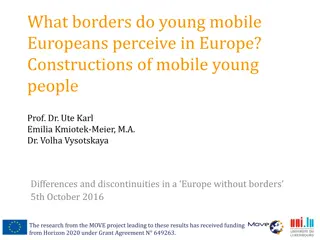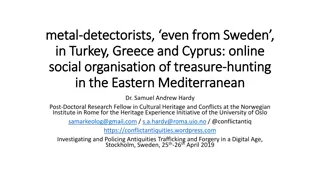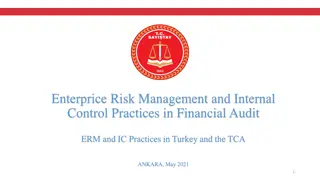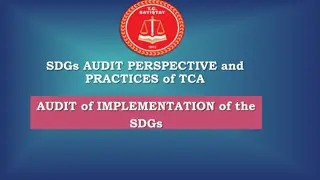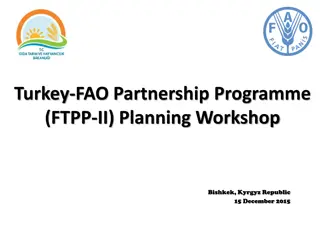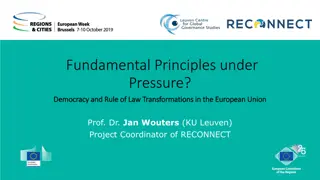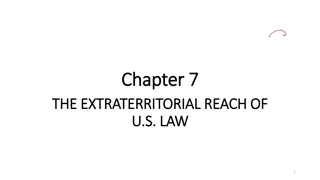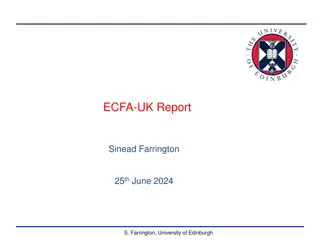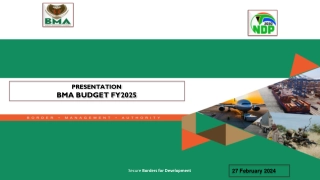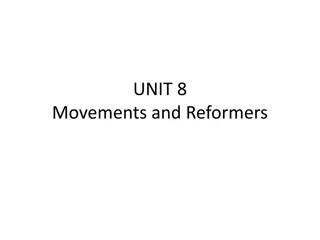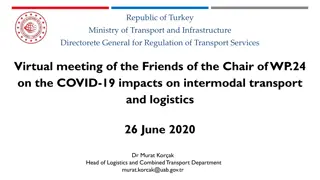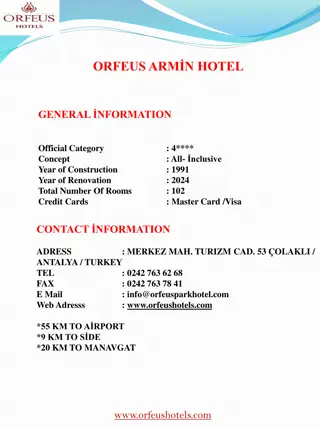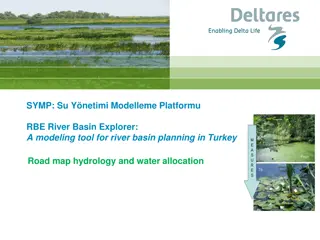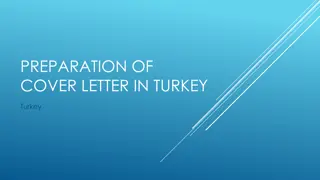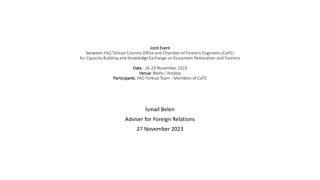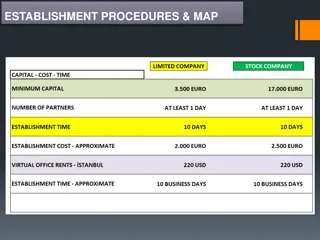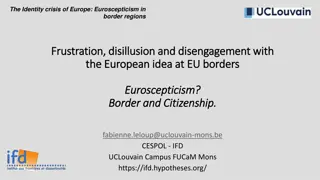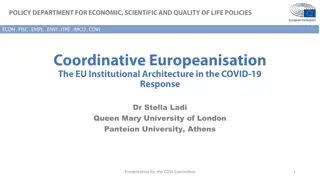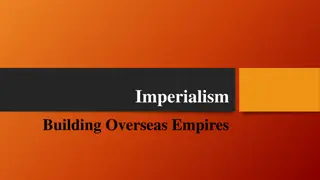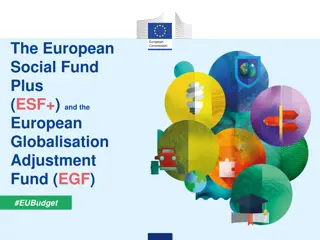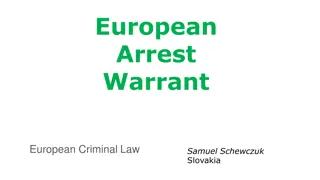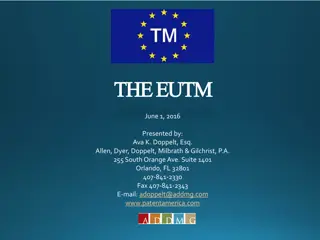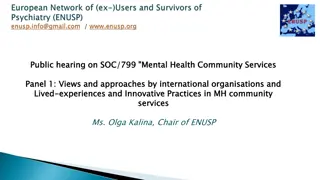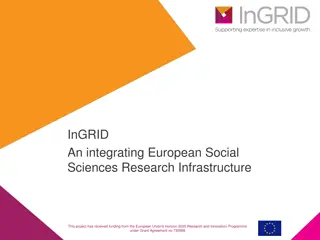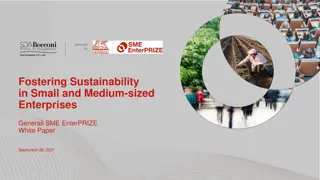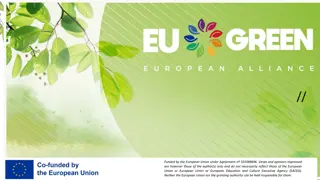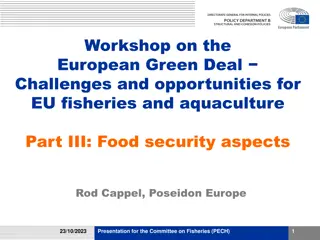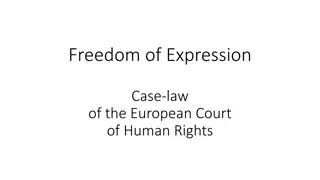Understanding the Externalisation of European Borders: A Case Study on Turkey
The externalisation of European borders involves pushing activities to subcontractors in return for payment, including returning irregular migrants and blocking migrants in third countries. The process consists of three steps, with key geopolitical events shaping policies and treaties. The case study in Turkey explores the impact of externalising European borders.
Download Presentation

Please find below an Image/Link to download the presentation.
The content on the website is provided AS IS for your information and personal use only. It may not be sold, licensed, or shared on other websites without obtaining consent from the author. Download presentation by click this link. If you encounter any issues during the download, it is possible that the publisher has removed the file from their server.
E N D
Presentation Transcript
Externalisation of european borders 1) Introduction 2) The three steps of externalisation 3) Externalisation of european borders in Turkey: case study 4) Conclusion
The externalisation of European borders Source : http://www.monde-diplomatique.fr/cartes/externalisations
Introduction : What does externalisation mean ? "pushing an activity out of one's own establishment and entrusting it to a subcontractor in return for payment (BURATTI, 2020) 2 mechanisms The return of irregular migrants The blocking of migrants in third countries. (Development aid in the countries of departure of the applicants in order to combat the root causes forcing people to emigrate) (Signing agreements with the countries of origin or transit to stem the flows before they enter EU territory)
A) Dublin, Schengen, Amsterdam, Tampere and Dublin, Schengen, Amsterdam, Tampere and GAM(M): 1990 GAM(M): 1990- -2003 2003 Geopolitical backgroung : The Yugoslav Wars, the fall of the Soviet Union and the expansion of the EU Policies and treaties that were to become vital for later stages of externalization -The Dublin Regulation 1990 --Schengen Agreement 1995 -The Amsterdam Treaty of 1997 and the Tempere summit of 1999
Source: https://europa.eu/european- union/documents- publications/slide- presentations_en
B) The ENP, The ENP, Mobility Return Directive: 2004 Return Directive: 2004- -2013 Mobility Partnerships Partnerships and the EU 2013 and the EU The 1990s and early 2000s saw a European expansion, the fall of the Soviet Union and increased migratory pressures from the South and East Treaties and policies -European Neighbourhood Policy in 2004 -Global Approach to Migration (GAM) 2005 revised in 2011 -Mobility partnership (Moldova ,Ukraine, Georgia, The Republic of Armenia, The Republic of Azerbaijan and The Republic of Belarus) -EU Return Directive 2008
The Peak of the The Peak of the Crisis Agreements Agreements: : 2014 Crisis and 2014 to and Readmission Readmission to now now Geopolitical context Arab spring and European economic crisis Agreements and statements -The Migration Partnership Framework 2015 -EU-Turkey Statement of 18 March 2016 -EU- Lybia; the operations Mare Nostrum and Operation Triton
Source : https://frontex.europa.eu/along-eu-borders/migratory-routes/central-mediterranean- route/ Source : https://frontex.europa.eu/along-eu-borders/migratory-routes/eastern-mediterranean- route/ As can be seen on these graphs of Frontex, the number of illegal border crossing has increased after 2013.
II/ Externalisation of european borders in Turkey: case study
a) European influence over Turkey 1999-2009 Geopolitical aims of turkey : -Turkey willingness to become a member of the European Union Influence over turkish policies - The policy negotiations on migration and border management between the EU and Turkey in 1999 -The Accession Partnership Document of 2001 -European Union influenced on national policies
B) Turkish strategy and ambitions since 2009 Geopolitical aims of Turkey -regional ambitions enhancing collaboration and economic, political and social relations with neighboring countries (Karada , 2019) -migration crisis Influence over EU-Turkey negotiation - EU-Turkey Statement of 18 March 2016
Conclusion : Limits and dangers The response of the EU to the increased irregular migration flows is limited by its increased border securitization. Besides, the rise of security measures and control mechanisms do not help to reduce the irregular migration flows They increase them They lead to diversification of irregular migration routes Finally, EU could violate the international law in terms of migration and human rights
Sources : Global Approach to Migration and Mobility, European Commission, 2020 https://ec.europa.eu/home-affairs/what-we-do/policies/international- affairs/global-approach-to-migration_en TASSIN tienne, La travers e des fronti res. L Europe entre identit s et migrations, Raison Publique, 2014, https://www.cairn.info/revue-raison- publique1-2014-2-page-105.htm HELLER Charles, PEZZANI Lorenzo, Les p rils de la migration : m diations conflictuelles du risque aux fronti res maritimes de l Union europ enne, Critique internationale, 2019, https://www.cairn.info/revue-critique-internationale-2019-2-page-101.htm FRONTEX, https://frontex.europa.eu/along-eu-borders/migratory-routes/western-mediterranean-route/ BURATTI Th o, Externalisation des fronti res de l Union europ enne: Enjeux et perspectives, Pour la solidarit : European think & do tank, juillet 2020. PASSARELLA Riccardo, L externalisation de l asile dans l Union europ enne: une valuation critique de la coop ration europ enne avec des pays tiers [travail de master en droit europ en de l asile], dir. Sarah Progin-Theuerkauf, Universit de Fribourg, octobre 2018. Ayselin Go zde Y ld z, The European Union s Immigration Policy Managing Migration in Turkey and Morrocco, London, Macmillan Publishers 2016 Jean-Baptiste, C. Comment l Europe sous-traite sa politique migratoire (2017, 28 November). Le Monde.fr. Retrieve from https://www.lemonde.fr/international/article/2017/11/28/comment-l-europe-sous-traite-sa-politique-migratoire_5221256_3210.html. Arnaud, Z. Les incoh rences de l externalisation des fronti res europ ennes (2017, 13 December). CNCD. Retrieve from https://www.cncd.be/Les- incoherences-de-l. Pauline, D. Quel impact de l externalisation de la politique migratoire europ enne sur le respect des droits de l homme dans les pays-tiers ? L exemple de la Turquie, de la Libye et du Maroc (2020, 7 February). Eurologos. Retrieve from https://www.eu-logos.org/2020/02/07/quel-impact-de-lexternalisation- la-politique-migratoire-europeenne-sur-le-respect-des-droits-de-lhomme-dans-les-pays-tiers-lexemple-de-la-turquie-de-la-lib/ Mark, A. Expanding the fortress (2018, 14 May). Transnational Institute. Retrieve from https://www.tni.org/es/node/24112. Sibel Karada Extraterritoriality of European borders to Turkey: an implementation perspective of counteractive strategies in Comparative Migration Studies, vol.7 , 2019. Retrieve from : https://comparativemigrationstudies.springeropen.com/articles/10.1186/s40878-019-0113-y


